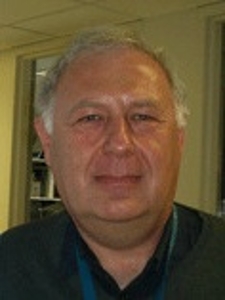OSE Seminar by Professor Roman Sobolewski on Terahertz Photonics
Departmental News

Posted: February 10, 2024
Date: Thursday, February 22nd, 2024
Time: 12:45 PM - 1:45 PM MST
Location: CHTM, Room 103 and Zoom
Abstract:
The field of Terahertz (THz) science and technology is still in its infancy but has already gained a very large international interest due to its numerous applications ranging from security screening, e.g., at airports, through ultrafast communications, radioastronomy, to nonionizing biomedical spectroscopy, medical imaging and diagnostics, and industrial food quality control. The THz radiation is situated between the infrared and microwave regions in the electromagnetic spectrum with a bandwidth ranging from 0.3 to 30 THz and in conventional terms, we can talk about the “THz gap,” i.e., a region of electromagnetic radiation spectrum where it is very difficult to successfully operate “classical” either electronic or photonic devices. For even the fastest FET-type transistor structures, the THz frequency of operation is extremely high, while THz quanta have the energy much smaller than the thermal energy background at room temperature. One of the most interesting forms of THz radiation are subpicosecond in duration bursts of electromagnetic waves. These, so- called, THz transients are, typically, characterized by approx. a single picosecond time duration and a 0.1 to 6 THz spectral range. We present a novel, integrated-optoelectronics approach that combines femtosecond laser pulses with materials and devices exhibiting sub- picosecond photoresponse times. We review our current THz photonics research, aimed towards generation and subsequent detection of sub-picosecond electrical transients for time- resolved (THz-bandwidth) spectroscopy studies of novel materials, nanostructured devices, and, most recently, ex-vivo imaging of pancreatic normal and tumor tissues. Spintronic nanostructures manipulate simultaneously electron’s charge and spin and emerge as a new direction in generation of THz transients, due to their robust and simple thin-film technology, low cost, and emission of ultra-broadband signals. The inverse spin Hall effect is the core emission mechanism of THz transients from spintronic nanostructures, such as ferromagnet/heavy metal nanobilayers. Future prospects of THz photonics will complete our presentation.
Biography:
